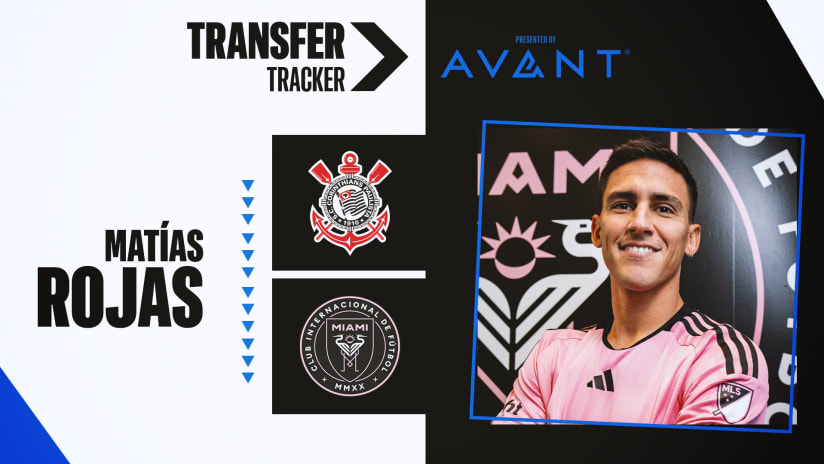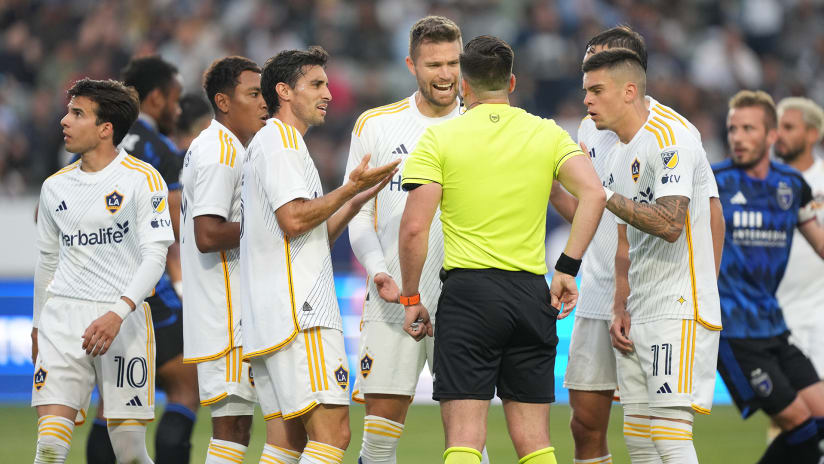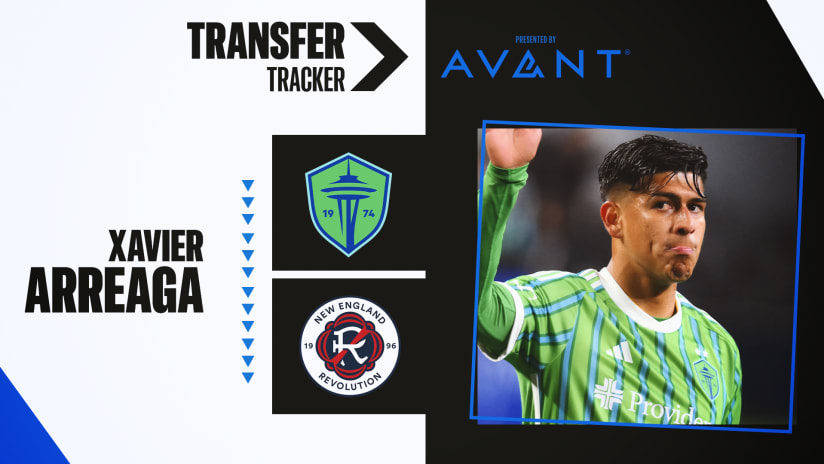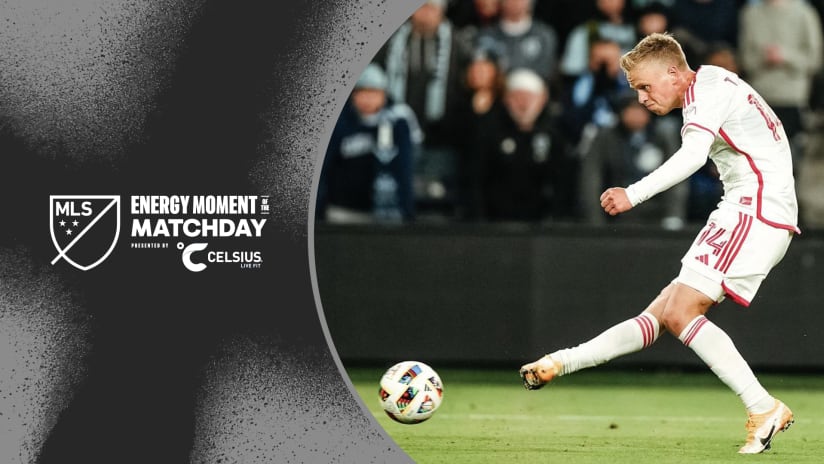Foreign superstars usually get the lion’s share of the attention in MLS, but this season was notable for the number of high-profile Americans coming home from Europe.
Freddy Adu, Kenny Cooper, Charlie Davies, Jay DeMerit and Benny Feilhaber all joined MLS in 2011. And it turned to be a year which saw the percentage of regular-season minutes played by Americans increase for the first time since 2004. Although the downward trend looked to continue early in the season (as noted previously in this column), in the end it actually increased slightly from 55.15 percent in 2010 to 55.75 percent in 2011.
| Percentage of Minutes for US Players | ||
| Rank | Team | Percent |
| 1 | San Jose | 79.16 |
| 2 | D.C. United | 78.35 |
| 3 | Houston | 73.78 |
| 4 | New England | 66.71 |
| 5 | Colorado | 62.78 |
| 6 | FC Dallas | 62.05 |
| 7 | Real Salt Lake | 59.29 |
| 8 | LA Galaxy | 58.95 |
| 9 | Columbus | 58.94 |
| 10 | Seattle | 55.49 |
On a team-by-team basis, the San Jose Earthquakes fielded the most US-based team for the second straight season, increasing their American minutes by 3.37 percent from a year ago. D.C. United had the largest change of any team, moving from 11th a year ago up to second place in Ben Olsen’s first full season as head coach.
The New York Red Bulls fielded the most foreign-born lineup of any American MLS team for the third consecutive season. Only 26.66 percent of their minutes went to Americans, which is the lowest-ever domestic percentage for an American MLS team, breaking the previous low of 31.18 percent by Chivas USA in 2005.
Meanwhile, the MLS Cup-bound Houston Dynamo are the playoffs’ most American team (73.78 percent), and its youngest team as well. Their opponents, the LA Galaxy, may be known for their big foreign signings, but they’re in the top half as well.
Toronto FC and the Vancouver Whitecaps both used more American players than Canadians, with American percentages of 20.98 percent and 47.79 percent, respectively. Because of that, the overall domestic percentage in MLS is down (53.18 percent vs 54.84 percent), even though the American share is up.
2. Which nationalities had the most minutes played in 2011?
Obviously, the United States leads the way. But how do the other nationalities stack up? Believe it or not, ranking ahead of Canada in second place is Colombia. The South American country boasts many of the league’s top stars, including David Ferreira, Fredy Montero and Jámison Olave.
| Nationalities Most Represented in MLS | ||
| Rank | Team | Percent of Mins. |
| 1 | United States | 55.76 |
| 2 | Colombia | 4.46 |
| 3 | Canada | 3.37 |
| 4 | Jamaica | 3.36 |
| 5 | Brazil | 2.95 |
| 6 | Costa Rica | 2.08 |
| 7 | France | 1.98 |
| 8 | Argentina | 1.76 |
| 9 | Ghana | 1.61 |
| 10 | England | 1.58 |
Colombian talent in MLS is nothing new; it’s been a constant since the very first MLS season in 1996, where Carlos Valderrama won the MVP award and was joined in the Best XI by defender Leonel Álvarez.
Overall, CONCACAF nations account for 70.57 percent of minutes played, with South America at 11.92 percent, beating out UEFA for second among the FIFA confederations at 10.39 percent. Africa is fourth at 5.76 percent, while Asia and Oceania are less than one percent.
France and Gambia (#14) are among the top nationalities, which is impressive because neither has a lengthy history in the league. Youri Djorkaeff was the first Frenchman in 2005, while Sainey Nyassi debuted for New England in 2007.
Statistics were counted using the player’s FIFA nationality. If a player is eligible for more than one national team, then his first nationality (place of birth) was used.
3. Which teams took advantage of their red cards this year?
When Colorado’s Tyrone Marshall was sent off in the first leg of their Eastern Conference Semifinal series against Sporting Kansas City, things looked bad for the home team. The Rapids conceded on the ensuing penalty and couldn’t do anything to improve their situation.
| Goal Differential - One or Two-Man Advantage | |||||
| Rank | Team | Minutes | GF | GA | GD |
| 1 | Columbus | 267 | 7 | 0 | +7 |
| 2 | Sporting KC | 135 | 6 | 0 | +6 |
| 3 | Real Salt Lake | 168 | 5 | 0 | +5 |
| 4 | Seattle | 232 | 6 | 1 | +5 |
| 5 | Philadelphia | 102 | 3 | 0 | +3 |
Given the experiences both teams had during the regular season, that was the expected outcome: SKC had scored six times without conceding with a numerical advantage, while Rapids had allowed four goals and scored none while down a man.
It was a similar situation when FC Dallas couldn’t take advantage of Jan Gunnar Solli’s expulsion for New York in the Wild Card round. FCD had a minus-2 goal differential while up a man this season, worst in the league, and they ended up allowing a late second goal on their way out.
| Goal Differential - One or Two-Man Disadvantage | |||||
| Rank | Team | Minutes | GF | GA | GD |
| 1 | Philadelphia | 74 | 2 | 0 | +2 |
| 2 | New York | 118 | 3 | 2 | +1 |
| 3 | D.C. United | 110 | 4 | 3 | +1 |
| 4 | Seattle | 41 | 1 | 0 | +1 |
| 5 | Chicago | 92 | 2 | 2 | 0 |
Looking at the MLS Cup finalists, the Houston Dynamo allowed five goals while disadvantaged. Despite that, they only dropped a net total of one point because of it. Playing with nine men, the late equalizer by Kansas City’s Aurélien Collin in July turned a win into a draw. However, they also managed to comeback for a draw in May against Dallas after Kofi Sarkodie was expelled.
Of the 18 teams in MLS, only Portland have spent fewer minutes playing on unequal terms than the LA Galaxy. Combined, those situations resulted in two dropped points. Both were in April as a result of the 1-1 D.C. United game where Charlie Davies drew a late penalty.
No team played more minutes up at least one man this season than the Crew, who also boasted a plus-7 goal differential. No team played down at least a man, meanwhile, more than than Real Salt Lake, who played 333 minutes down at least one man and allowed10 goals and a league-low minus-7 goal differential. San Jose finished a close second, allowing six goals in 90 minutes of short-handed play.















